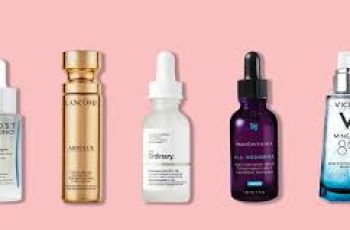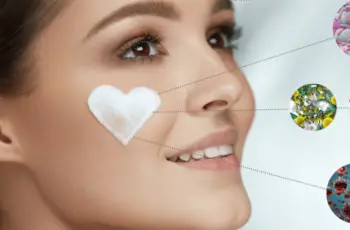
How To Make A Pimple Go Away Fast
We’ve all experienced the frustration of waking up with a fresh, inflamed pimple staring back at us in the mirror, right before an important meeting, date, or event we’ve been looking forward to for weeks.
Resisting the urge to squeeze, pick, or poke at a pimple is easier said than done, especially when it’s red, raised, and practically begging for attention every time you glance in the mirror.
However, giving in to temptation and attacking a blemish with your fingers or tools often leads to worse outcomes—more inflammation, scarring, and a prolonged healing process.
For those looking for effective ways to make a pimple disappear fast without damaging the skin, the good news is that there are smart, dermatologist-approved strategies you can try at home.
While not all pimples vanish overnight, the following methods can significantly reduce inflammation, calm redness, and shrink their appearance so you can feel more confident quickly.
Let’s break down what really works when it comes to fast-tracking the healing of that unwelcome blemish and which common “hacks” might actually make things worse.
1. Apply an Ice Cube to Reduce Swelling and Pain
If your pimple feels sore, swollen, and seems like it’s still developing under the surface, applying ice can offer quick relief and visible improvement.
Wrap an ice cube in a clean washcloth or paper towel and gently press it against the blemish for 2 to 4 minutes at a time, being careful not to burn the skin.
Repeat this ice application every couple of hours throughout the day to calm redness, numb pain, and help reduce the size of the pimple dramatically.
This method is especially effective for cystic or deep pimples that haven’t come to a whitehead and can be too painful to touch or conceal with makeup.
2. Use a Salicylic Acid Treatment
Salicylic acid is a beta hydroxy acid (BHA) that is oil-soluble, meaning it penetrates deep into clogged pores to dissolve dead skin cells, excess sebum, and breakout-causing debris.
To get the most out of this powerful ingredient, use a salicylic acid-based serum or spot treatment and apply it directly to the affected area after cleansing your skin.
This type of treatment can help speed up the healing process by targeting the root of the breakout while also preventing new pimples from forming nearby.
For added benefits, combine salicylic acid with an alpha hydroxy acid (AHA) like glycolic acid, which helps exfoliate the skin’s surface and improve cell turnover.
To avoid over-exfoliation, use a glycolic acid toner in the morning and reserve your salicylic acid product for your nighttime routine, allowing your skin to balance and repair.
Be consistent with use, as these acids work best when they’re used regularly and appropriately for your skin type and sensitivity level.
3. Clean Your Makeup Brushes Weekly
Dirty makeup brushes are often overlooked culprits when it comes to recurring pimples, especially when they’re popping up in the same areas of your face over and over.
Brushes can harbor bacteria, oil, and product residue that builds up over time, contaminating your skin with every use and undoing the benefits of your skincare routine.
To prevent this, wash your brushes thoroughly at least once a week with a gentle cleanser, focusing on those used for foundation, concealer, blush, or bronzer.
You’ll likely see clearer skin and better makeup application as a bonus, thanks to clean tools that no longer spread hidden grime onto your face.
4. Change Your Pillowcases Regularly
Pillowcases come into contact with your skin for hours each night, and over time, they accumulate sweat, oil, dead skin cells, and hair product residue.
If you’re not changing your pillowcases often enough, you may be unknowingly exposing your skin to bacteria that can clog pores and trigger fresh breakouts.
Aim to change your pillowcases at least once a week, or more often if you have oily skin, use heavy hair products, or notice frequent blemishes on the sides of your face.
Opt for breathable, soft fabrics like cotton or silk to minimize irritation and support a cleaner, more comfortable sleep environment.
5. Review Your Diet and Gut Health
There’s growing evidence that your gut and skin are closely connected, and what you eat can have a direct impact on inflammation and acne flare-ups.
Diets high in refined sugars, dairy, and greasy fast foods have been linked to increased breakouts due to their effect on hormones and inflammatory responses in the body.
Start by reducing your intake of soda, candy, fried foods, and processed snacks, and replace them with nutrient-rich fruits, vegetables, and whole grains.
If you suspect food sensitivities or allergies could be playing a role, consider keeping a food diary or speaking to a nutritionist for targeted guidance.
Hydrating well and maintaining a balanced diet helps support the skin’s natural healing process and gives you a clearer complexion over time.
6. Use Spot Treatments Designed for Acne
Rather than reaching for toothpaste or diaper rash cream—which can dry out and irritate your skin—opt for a product that’s formulated specifically for acne.
Look for ingredients like benzoyl peroxide, sulfur, salicylic acid, or tea tree oil, which have proven effectiveness in reducing breakouts and calming inflammation.
Apply a small amount to clean skin before bed, and allow it to absorb fully so the active ingredients can work overnight without interference from other products.
A good acne spot treatment can shrink the size of a pimple within 24–48 hours, especially if applied as soon as you notice the blemish forming.
What NOT to Do If You Want Pimples to Heal Quickly
Now that you know the most effective strategies for treating pimples fast, let’s talk about common mistakes that can make things worse instead of better.
1. Don’t Pick or Pop the Pimple
As tempting as it may be, picking at your pimples increases inflammation, introduces bacteria from your hands, and raises the risk of permanent scarring.
Even if you manage to extract a whitehead, doing so with too much force or without proper hygiene can leave a scab or post-inflammatory hyperpigmentation behind.
Let your products do the work instead, and give the blemish time to resolve naturally without physical interference.
2. Avoid Harsh or Stripping Products
When you’re desperate to feel clean and fresh, it’s easy to go overboard with scrubs, astringents, or drying face washes that promise a “squeaky clean” feeling.
But these harsh formulas often disrupt the skin barrier, strip essential moisture, and leave your skin vulnerable to further irritation and breakouts.
Stick to gentle, non-comedogenic cleansers and avoid alcohol-based toners or aggressive physical exfoliants that can do more harm than good.
3. Don’t Rely on Toothpaste or Home Remedies Without Research
Using toothpaste, lemon juice, or other viral internet remedies might seem like a quick fix, but these methods often lead to chemical burns or worsen irritation.
Toothpaste, for example, contains ingredients that are too alkaline for facial skin and can disrupt the natural pH balance, leading to dryness and flaking.
Instead, use dermatologist-recommended products that are scientifically proven to treat acne without causing long-term side effects or damage.
Final Thoughts: Prevention Is Better Than Cure
While it’s possible to shrink a pimple fast with the right tools and techniques, preventing breakouts before they start is always a smarter long-term approach.
Establish a consistent skincare routine that includes cleansing, exfoliating (gently), moisturizing, and treating with acne-safe actives suited to your skin’s needs.
Don’t skip SPF during the day—even acne-prone skin needs sun protection, and many treatments make your skin more sensitive to UV damage.
Stay hydrated, manage stress, and get enough sleep, as all of these lifestyle factors play a huge role in how your skin behaves and heals.
Remember, everyone gets pimples sometimes—it’s a normal part of life and nothing to be ashamed of. What matters is how you care for your skin moving forward.
By using these targeted methods and avoiding common pitfalls, you’ll be well on your way to saying goodbye to that stubborn spot in no time.
With patience, proper care, and smart choices, your skin will heal faster, look clearer, and be less likely to break out again in the future.


